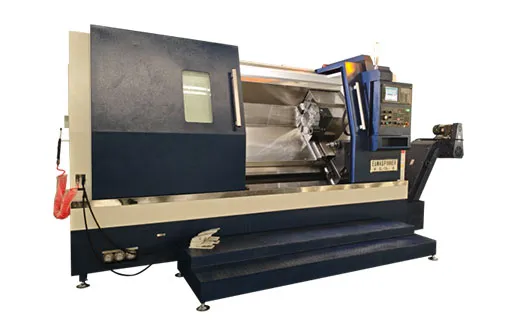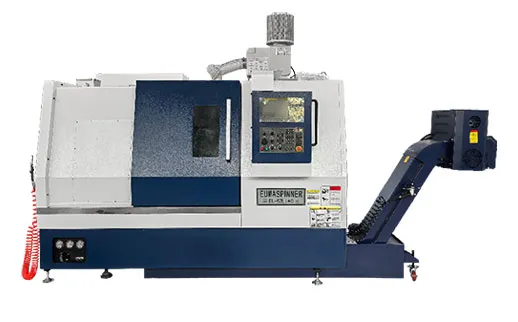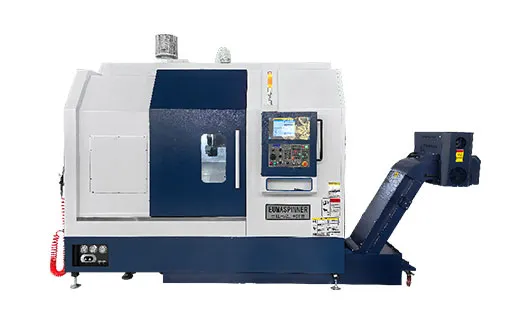In the field of precision engineering, where even a 0.001mm deviation can lead to the failure of an entire project, the choice of machining equipment directly determines the quality of products, production efficiency, and market competitiveness. As the "game-changer" in modern manufacturing, the 5-axis machining center has become a core investment target for more and more precision engineering enterprises. Unlike traditional 3-axis or 4-axis equipment, it breaks through the limitations of processing angles and operation complexity, bringing a series of irreplaceable advantages. Below, we will deeply analyze the top 5 benefits of investing in a 5-axis machining center, helping you understand why it is a necessary investment for the development of precision engineering.

Precision is the lifeblood of precision engineering, and the 5-axis machining center takes this to a new level. Traditional machining equipment often requires multiple clamping of workpieces to complete multi-angle processing. Each clamping will inevitably introduce positioning errors, which is a fatal flaw for components with ultra-high precision requirements such as aerospace parts, medical instruments, and precision molds. The 5-axis machining center realizes the integration of multi-angle processing through the linkage of the workpiece table or the spindle. The workpiece only needs one clamping to complete the processing of complex surfaces and multi-dimensional features, which fundamentally avoids the accumulation of clamping errors.
5-Axis Machining Center(B/C axis)
Equipped with high-precision linear guides, torque motors, and advanced CNC systems, the mainstream 5-axis machining center can easily control the machining accuracy within ±0.005mm, which fully meets the strict requirements of high-end precision engineering. For example, in the production of artificial joint components, the 5-axis machining center can accurately restore the complex curved surface of the joint, ensuring the fit and wear resistance of the product, and directly improving the safety and service life of medical devices.
For precision engineering enterprises, efficiency is directly linked to profits. The 5-axis machining center optimizes the production process from multiple aspects, bringing a qualitative leap in efficiency. First, the one-time clamping reduces the auxiliary time such as workpiece positioning, clamping, and tool change. Compared with traditional equipment, the auxiliary time can be reduced by 30%-50%, and the effective machining time of the equipment is greatly increased. Second, the 5-axis linkage allows the tool to always process the workpiece at the optimal angle, reducing the cutting resistance, improving the cutting speed and feed rate, and the material removal rate can be increased by 20%-40%.
Taking the processing of a complex precision mold as an example, using a 3-axis machining center takes about 8 hours, while a 5-axis machining center can complete it in 3 hours, and the surface finish of the product is better, reducing the subsequent polishing process. In the mass production of precision components, the efficient processing capacity of the 5-axis machining center can help enterprises shorten the production cycle, quickly respond to market orders, and gain an advantage in the fierce market competition.
With the development of industries such as aerospace, new energy, and intelligent manufacturing, the structure of precision components is becoming more and more complex, and curved surfaces, inclined holes, and multi-dimensional features are becoming more and more common, which makes traditional machining equipment "incompetent". The 5-axis machining center has five independent motion axes (three linear axes and two rotation axes), which can drive the tool to reach any position and angle in the 3D space, and easily handle complex processing tasks that are difficult for traditional equipment.
For example, in the processing of aero-engine blades, the blade has a complex twisted curved surface and strict airfoil requirements. The 5-axis machining center can realize the continuous and smooth processing of the airfoil by virtue of its flexible linkage performance, ensuring the aerodynamic performance of the blade. In addition, for precision components with irregular shapes and multiple processing surfaces, the 5-axis machining center can also avoid tool interference, improve the processing pass rate, and reduce the waste of raw materials.
Precision engineering involves a wide range of fields, and the materials and structures of components are diverse, which puts forward high requirements for the adaptability of machining equipment. The 5-axis machining center has strong adaptability, whether it is metal materials such as aluminum alloy, titanium alloy, and stainless steel, or non-metal materials such as engineering plastics and composite materials, it can carry out efficient and precise processing by matching different tools and processing parameters.
At the same time, the 5-axis machining center can be equipped with automatic tool changers, workpiece measuring systems, and robot loading and unloading systems according to the needs of enterprises, realizing automated and intelligent production. For small and medium-sized precision engineering enterprises that need to process multiple varieties and small batches of products, the 5-axis machining center can quickly switch processing programs, reducing the time cost of product replacement; for large enterprises with mass production needs, the automated production line composed of 5-axis machining centers can further improve production efficiency and ensure the consistency of product quality.
Although the initial investment cost of a 5-axis machining center is higher than that of traditional equipment, its long-term investment value is far greater than the initial cost. On the one hand, the high precision and high efficiency of the 5-axis machining center can help enterprises improve product quality, reduce rework and waste, and reduce the comprehensive production cost. On the other hand, with the continuous upgrading of the manufacturing industry, the demand for high-precision and complex components is increasing. Investing in a 5-axis machining center can help enterprises grasp market opportunities, expand business scope, and enhance core competitiveness.
In addition, the 5-axis machining center has a long service life (generally 10-15 years) and mature maintenance technology. As long as it is properly maintained, it can maintain stable performance for a long time. For precision engineering enterprises, the 5-axis machining center is not only a production tool but also a strategic investment to promote the transformation and upgrading of the enterprise and achieve sustainable development.
In the era of high-quality development of manufacturing, the 5-axis machining center has become an indispensable core equipment for precision engineering enterprises with its advantages of high precision, high efficiency, strong adaptability, and strong complex part processing capabilities. Investing in a 5-axis machining center is not only an investment in equipment but also an investment in product quality, production efficiency, and future development.
If you are looking for a 5-axis machining center that suits your company's precision engineering needs, choose EUMA Machinery. We possess mature technology, comprehensive after-sales service, and can customize machining solutions based on your company's product characteristics and production scale. Let our 5-axis machining center become the driving force for your company to stand out in the field of precision engineering.



GET A QUOTE